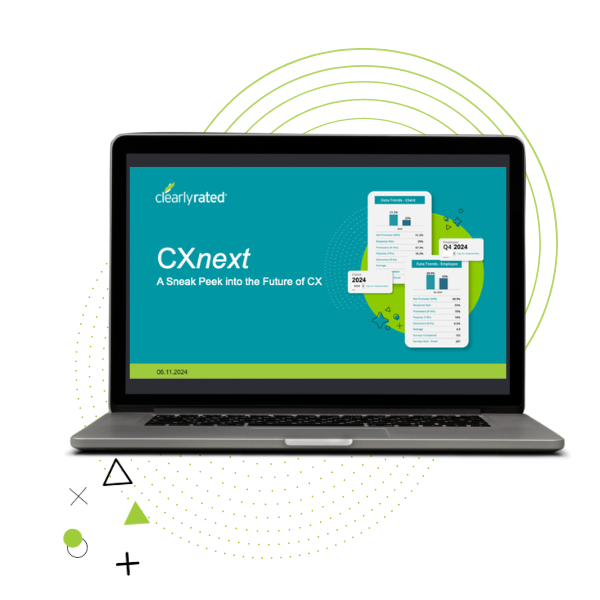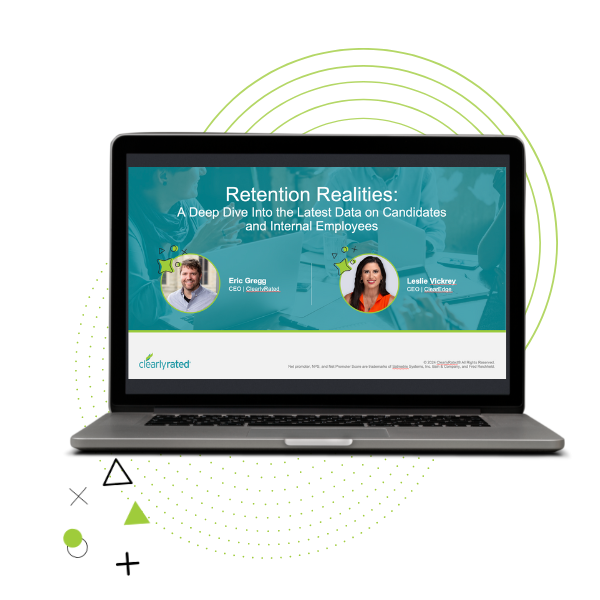For those of us working in the professional service industries such as staffing and accounting, it likely isn’t a surprise that our industries lack diversity. Some of us have long assumed there is a pay equity gap, and we have seen with our own eyes the lack of diversity in leadership. But, often those are assumptions, driven by our own experiences and not by data. Until now.
For the first time ever, we have significant data to help staffing and accounting firm leaders understand the current state of diversity, equity & inclusion (DEI) in our industry.
- Compared to the general workforce, professionals identifying as Black and Hispanic are underrepresented in the staffing¹ and accounting industries.
- The U.S. Department of Labor reports that, in 2020, women in the American workforce earned just 82 cents for every dollar a man earned. We find that the gender pay gap in the staffing and recruiting profession is even worse – with women earning just 77 cents on the dollar,¹ even when correcting for age and years of experience. The gap is smallest in early-career positions such as recruiter or account manager, but expands as women are promoted into branch leadership and director roles. In the accounting industry, female accountants and auditors made just 78 cents to the dollar that men earned in 2020. Even in the human resources profession, female HR managers made just 91 cents on the dollar that men earned in 2020.

- In the staffing industry, Black or Hispanic women are more than 3x as likely as white men to be Detractors of their firm (learn more about Detractors and NPS >>). What’s more, Black or Hispanic women are 19.3% less likely than white men to feel like they belong, 10.4% less likely to perceive opportunities for advancement within the firm, and a whopping 29.8% less likely to report that they perceive their compensation package to be fair.¹

Maybe these trends are new to you. Maybe – if you’re like me – the data confirms dynamics that you’ve suspected for a while. Either way, now is the time to do something about it.
What can your firm do to address the issues of diversity, equity, and inclusion?
One of the most common questions that I hear from business service firms after I present DEI data is – “What can we do?”
The good news is, this response tells me something that the data does not—which is that business leaders legitimately care about leveling the playing field and making their places of work inclusive and engaging for all professionals – regardless of age, gender identity, race, sexual orientation, physical or mental ability, ethnicity, and perspective.
The bad news is, there is no one-size-fits-all approach to addressing issues of diversity, equity, and inclusion. There are no hacks, only a legitimate amount of work to be done, regardless of where your firm is on its DEI journey. That work must be driven by leadership to explore the specific demographic trends and cultural needs within your organization, build a roadmap for where you want to take your business, and commit the resources to making that journey happen.
3 critical steps for addressing issues of diversity, equity, and inclusion at your firm
While there is no one-size-fits-all approach, I want to share three steps that will be critical to the success of any DEI effort in your organization.
Step 1: Get to know your biases.
In case this is your first time hearing about bias, I want to take a moment to define what bias is and why it’s okay to have biases.
From a human development perspective, bias is a natural and universal strategy that our brains have adapted to help us make faster judgment calls in a way that preserves mental energy and keeps us safe. You can probably imagine why this was critical to human survival in hunter-gatherer times. But even in our modern professional climate, where many of us are asked to make hundreds of decisions and judgement calls a day, our brain invites bias to the table as a “hack” to help us make those decisions less taxing.
Nice, right? Here’s the downside. Bias, and more specifically implicit bias, introduces patterned decision-making that, over time, limits our exposure and perspective to what’s familiar—i.e. what we’ve experienced before.
Take me for example. As a white, able-bodied, cisgendered, heterosexual male who grew up in small town in Montana (where the population was largely white, able-bodied, cisgendered, and heterosexual) it would be understandable that my brain would build a pattern to bias my decision-making around, let’s say, hiring (something that I do all the time as a CEO), in favor of other demonstrably white, able-bodied, cisgendered, and heterosexual professionals.
Uh-oh. No thank you, bias!
Unfortunately, the problem becomes more sinister when we consider the historical systemic inequities that have made American workplaces more hospitable environments for white, able-bodied, cisgendered, and heterosexual professionals.
Put differently, there have been decades, even centuries of discrimination within American workplaces, as well as state and federal laws, that disenfranchise people of color, people living with disabilities, and members of the LGBTQIA+ community. This history is why, in no small part, we are here talking about DEI initiatives in the first place.
We actively contribute to the problem when we allow our biases to steer us towards what’s familiar without taking into account the shortcomings of our limited experience or the historical context of discrimination. Conversely, we can combat the problem by engaging in active study of our biases, and by building a culture that acknowledges bias and works to build systems that protect us from blindly following bias.
All of this to say. You have biases, I have biases, we all have biases, and that’s “okay.” There’s really no way around it. What’s not okay—or, more specifically, what makes biases problematic—is when we allow our biases to take the driver’s seat and bypass our critical thinking brain, especially when it comes to building a diverse, equitable, and inclusive workplace.
Step 2: Combat your biases with real data.
One of the reasons that I lean so heavily on industry data when speaking about issues of diversity, equity, and inclusion is that cold hard facts are one of the most powerful ways to combat bias.
For example, my perspective as a white, able-bodied, cisgendered, heterosexual male CEO is that all of my employees feel welcome in our organization, that everyone has equal access to opportunities for advancement, and that our diversity efforts are recognized and appreciated.
But would every single one of my employees agree with me? Until I ask, I am not really addressing my biases. In this case, in addition to the biases that are inherent in my identity and how I grew up, I also have biases associated with the power that I hold as CEO of this organization. Understanding perspectives across not only identities but also across roles within the organization is critical to filling in my blind spots and ensuring that I understand the reality of our workplace and culture from the perspective of my staff, not just from my purview.
This opportunity to combat bias with real data is the reason why we designed ClearlyRated’s employee satisfaction survey program: to help business service firms measure their team’s perceptions related to diversity, equity, and inclusion.

Here are a few ways that organizations use our employee survey to assess their performance related to DEI:
- Measure employee satisfaction, and examine whether it varies by demographic. Obviously, employee satisfaction is a critical factor in your organization’s success. But when it comes to diversity, equity, and inclusion, it’s important to understand whether there are trends dictating which members of your team are and are not satisfied. Remember at the start of this blog post when I mentioned that, in the staffing industry, Black or Hispanic women are more than 3x as likely as white men to be Detractors of their firm? You can, and should, care whether this dynamic exists within your organization. And you will never know until you ask.
- Assess your team’s perception of meritocracy within the organization. Do your employees feel that the best people get promoted regardless of their identity? How consistent is that perception? Once again, it’s critical to look at responses across key demographics like race, gender, sexual orientation, department, and seniority.
- Understand how your employees assess your diversity efforts. If you’re reading this blog post, you (and, hopefully, your organization) are committed, in some way, to making diversity of identity, thought, and experience a priority in the workplace. I know from first-hand experience that a lot of effort goes into this work, but those efforts aren’t always seen or perceived by the entire staff. What’s more, you may be communicating with staff about diversity initiatives, but they may be reading your actions differently. It’s important to measure this perception, and to understand whether employees feel that management within the organization demonstrates a commitment to diversity through their actions, not just their words. As with all questions related to diversity, equity, and inclusion, always be sure to examine responses across key demographics to tease out any blind spots.
- Uncover whether your employees feel they belong at your organization. Inclusion, while difficult to measure, can be a critical factor in ensuring that DEI efforts generate sustained cultural improvements. We help organizations measure inclusion with a question that gets at how employees would rate their sense of belonging in the workplace. As with the other questions, you should take the extra step to examine these responses across key demographics like race, gender, sexual orientation, department, and seniority to identify where engagement and belonging may be lacking.
Don’t let your biases blind you to the work that must happen inside of your organization. Arm yourself with real data, and use this new awareness to build your understanding of your organization, your culture, and the work that needs to be done related to diversity, equity, and inclusion.

Step 3: Make a commitment, make a plan, and then execute.
Did you know that, when evaluating potential employers, 70% of job seekers value a company’s commitment to diversity?
The truth is, demonstrating a commitment to diversity, equity, and inclusion in the workplace is no longer optional. When it comes to employer branding, companies that don’t take a stand on these issues (and demonstrate the steps they are taking to address them within their own organizations) are going to be left behind.
Step 3 is purposefully broad. The commitments that your company can and should make must fit within the cultural context of your organization. They should be directly informed by the perceptions of your employees (see step 2) and they should target those biases that are most pervasive in your workplace (see step 1).
That said, I do have a few recommendations that can be universally applied when moving through this step in your DEI initiative.
Recommendation #1: When you are making commitments, be sincere. That may sound obvious, but I know from personal experience that the risk of “performative” action is high when it comes to DEI. What I mean by that is that it’s very easy to feel inclined to say something because other organizations are saying it (i.e. “peer pressure to say the right thing”), rather than sourcing a stated commitment around diversity, equity, and inclusion from a deeply held belief within the organization. Refer back to step 1, examine your biases, practice speaking about systemic inequities, and develop a common language that can be codified into a company-wide commitment.
Recommendation #2: Commit time to building a plan for how you will make progress on your stated DEI commitments. It’s essential during this planning phase that you invite input from across the organization (we know the power of diverse voices!). What’s more, the folks within your organization who may struggle the most with belonging or feeling that they have equitable access to opportunity are the folks who are most needed at the table when building these plans.
Recommendation #3: Focus on a few goals that you and the team believe will help you make progress towards your commitments. As always, when it comes to setting goals, it’s important to be specific. Set goals that you feel are both important and attainable. Make sure they are measurable, so that the entire organization can understand whether they have been met. Your goals can be:
- Metrics (like setting a goal for a minimum eNPS benchmark across demographic and seniority groups)
- Process-oriented (like implementing a blind hiring process in the next quarter)
- Or outcome-oriented (like delivering a report on pay equity across the organization).
And of course, you can set any combination and quantity of goals that you like… As long as you are willing to dedicate the resources to execute on them.
Recommendation #4: Resource your commitments. Keep in mind that these goals will not be achieved in a vacuum. You and your team will need to prioritize and dedicate time, energy, and fiscal resources to seeing them through to the end. Do not set goals that you cannot (or will not) commit to supporting as an organization. Not only is that a recipe for failure when it comes to hitting your goals, but you also risk eroding trust within your organization. Think big, and be pragmatic. Do not set your team up to fail.
What you need to get started…
Like any organizational initiative, the success of your DEI efforts will require buy-in from the very top. More often than not, securing support and resources from firm leadership can be the biggest hurdle to getting started. Here are a few ideas to mobilize internal support:
- Consider pulling in the HR manager in your organization, or whoever is responsible for employee engagement and retention. Ask them what it would take to make DEI a priority initiative, and what they would need to make the case to leadership.
- Build a case for taking action with any and every relevant resource and data point you can get your hands on (please feel free to utilize this blog post and any of the data trends cited or referenced!).
Find other firms in your industry who are already taking action (I promise, they exist) and utilize their efforts as a mobilizing force within your firm. The reality is, DEI is a top issue for employees and prospective talent, and your firm will not want to be left behind as the competition takes meaningful action.
¹ 2021 study from ClearlyRated of more than 4,000 internal staff across 67 firms and 93 brands





